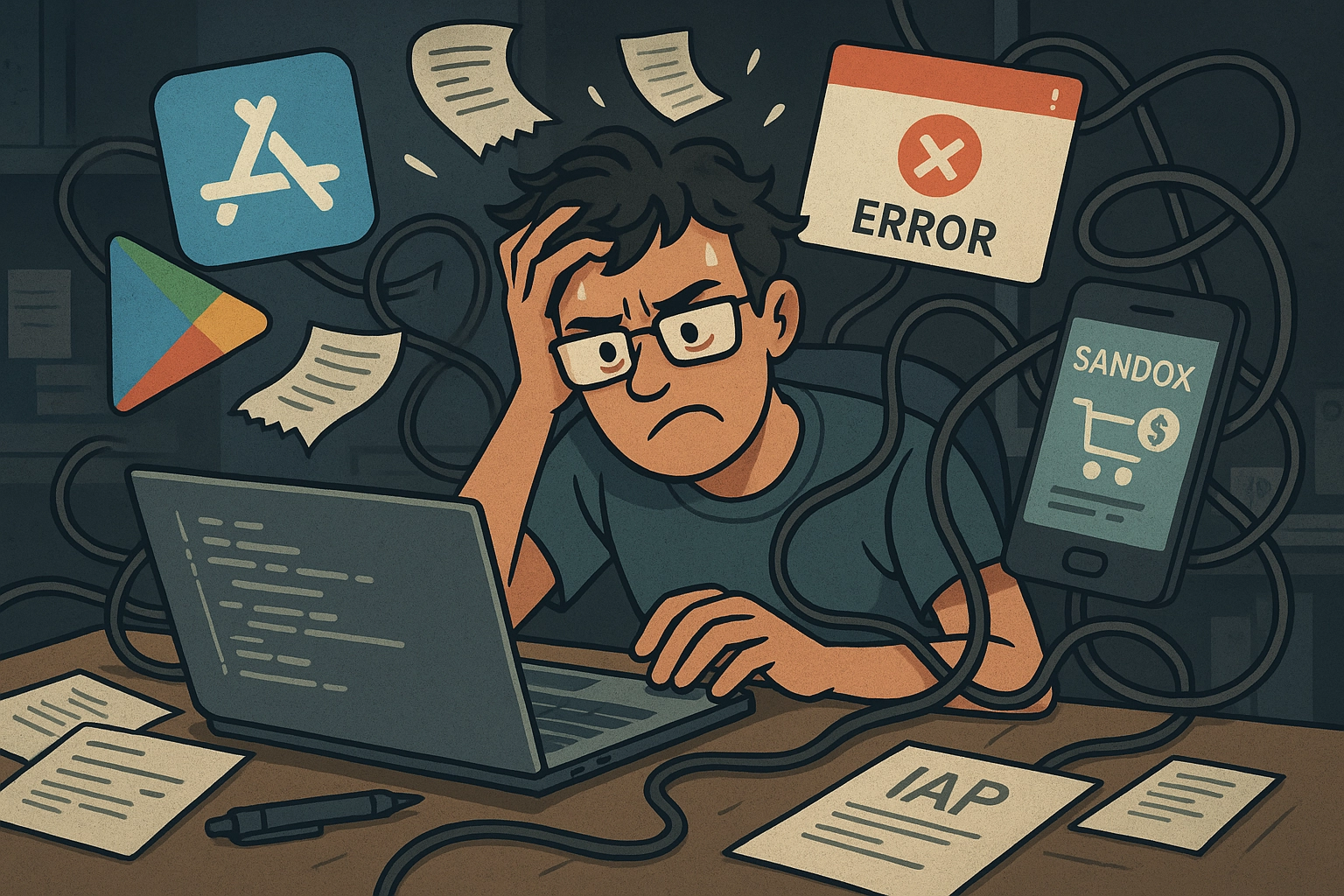Ouch. In-App Purchases (IAP) — also known as “Instant Agony Protocol” — are a true pain in the ass.
Once upon a time, we had a beautiful, well-designed, clearly documented mobile app. Everything was in harmony — code, design, logic — a dev’s little utopia.
Then came the twist:
“Users should be able to buy items.”
Fair enough. I’ve built dozens of apps with third-party payment gateways — Stripe, PayPal, you name it. We scoped the vision, locked the timeline, and moved forward confidently.
But then the client dropped the bomb:
They had to use the official App Store / Play Store IAP system.
I paused, blinked, and thought,
“No big deal. How bad could it be? It’s just another payment gateway… right?”
— Naive me, 72 hours before descending into IAP hell.
💭 What I Thought vs. What Actually Happened
What I expected:
A weekend project with clean documentation and straightforward integration.
What I got:
A month-long odyssey through bureaucratic nightmares, cryptic error messages, and the kind of debugging sessions that make you reconsider your career — and sanity.
🚀 The Journey Ahead
This series will walk you through the complete IAP implementation — the good, the bad, and the “why-is-this-even-a-thing” ugly. This series covers the complete IAP gauntlet:
Part 2: Store Setup – The Bureaucratic Maze
Setting up products in both App Store Connect and Google Play Console sounds simple — until you realize each platform speaks a different language.
We’ll dive into the endless forms, approval purgatory, and the mysterious art of getting test products to actually show up in sandbox mode.
Spoiler alert: “Pending review” will become your least favorite phrase.
Part 3: Ionic Capacitor Implementation – When Plugins Attack
Integrating IAP into Ionic + Capacitor should be plug-and-play, right? Wrong.
We’ll explore the fragmented plugin ecosystem, outdated docs, and the joy of discovering that what works on iOS breaks Android — and vice versa.
Plus: the not-so-universal "purchase flow."
Part 4: The Sync Nightmare – When Reality Hits
Here’s where things get spicy.
Users buy products, but your backend doesn’t know.
Receipts validate but aren’t delivered.
Network failures create zombie transactions.
We’ll tackle:
Receipt validation
Webhook reliability
The dark art of syncing chaotic platforms
Part 5: Admin Features – The Control Room
Nothing says “pro” like giving your client full control without touching App Store dashboards.
We’ll build an admin interface to:
Track purchases
Handle refunds
Manage IAP products
A lifesaver for you, and your client’s support team.
🧯 The Reality Check
If you're about to embark on your own IAP journey, buckle up.
This isn't your average API integration. It’s a multi-platform, multi-store, multi-headache saga that will test your patience, your debugging skills, and possibly your relationship with mobile development.
But once you survive it — and you will — you’ll have conquered one of mobile’s most notorious dragons.
And hey, you’ll have some killer war stories for your next dev meetup.
Coming Soon
🚧 Part 2: Store Setup – The Bureaucratic Maze
💡 As time allows:
I’m building MikaIAP — a full open-source In-App Purchase system using Ionic, NestJS, and MikaForm. Stay tuned for the GitHub release when it’s ready,

